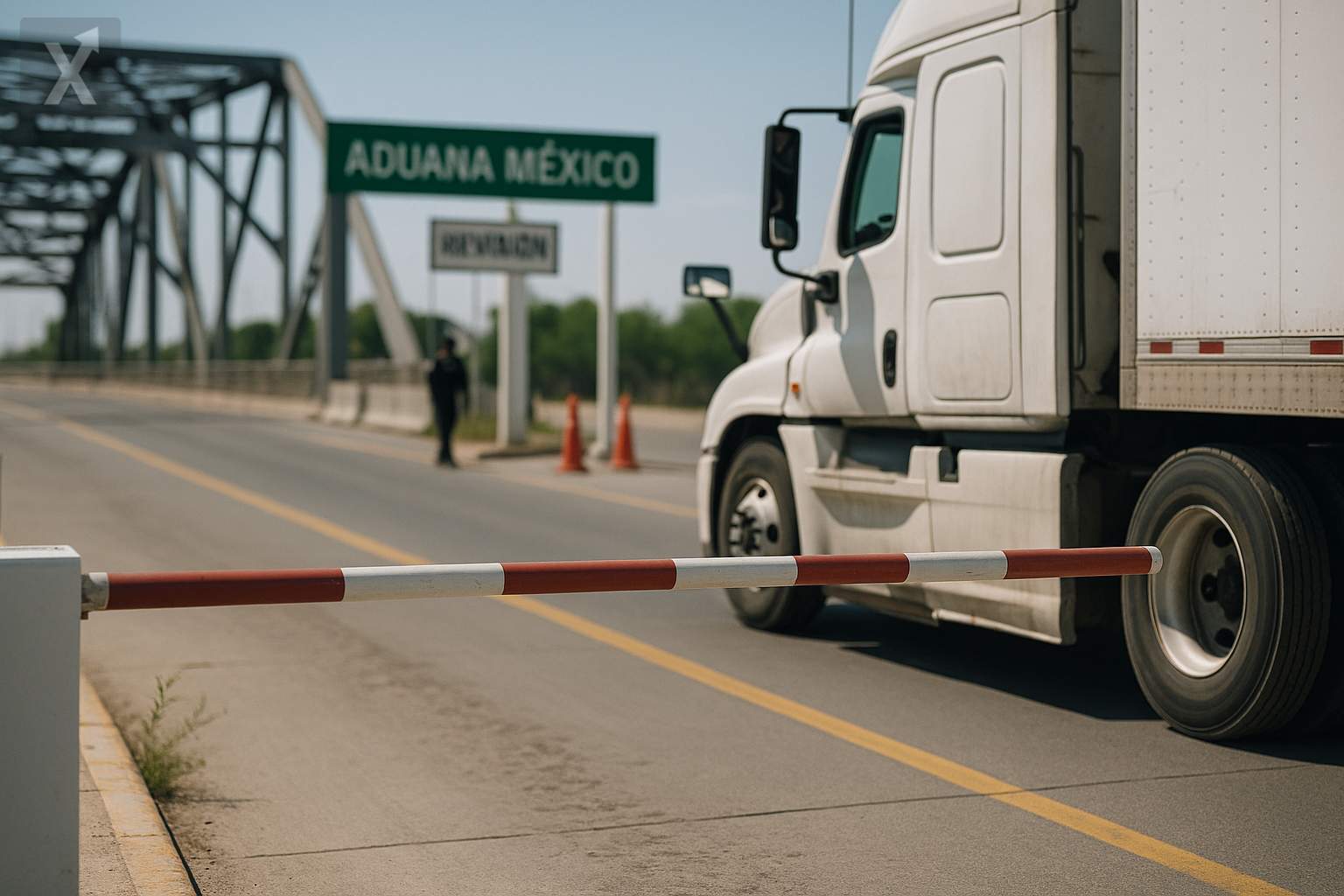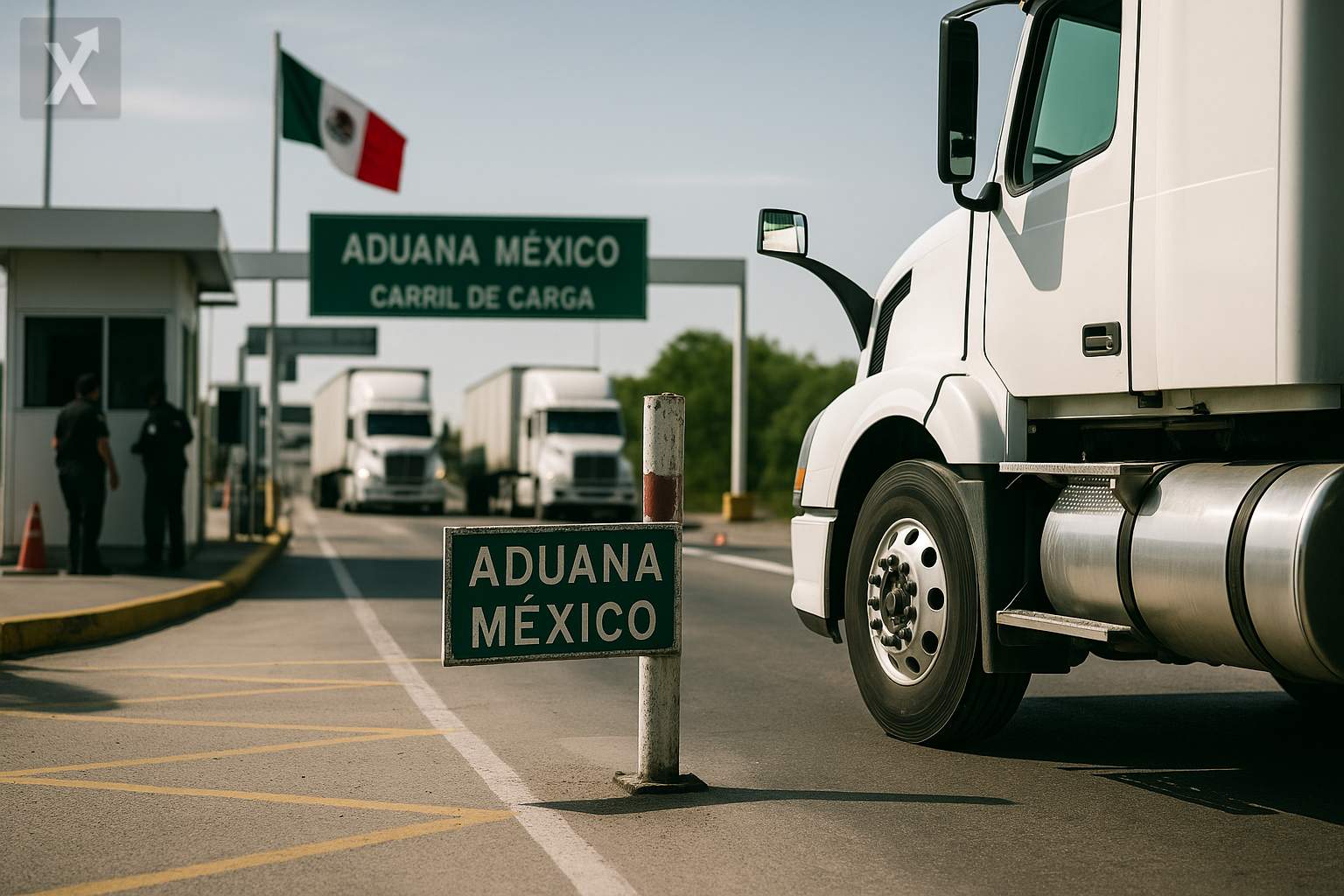Mexico Cushions New U.S. Tariff Cycle; Limited Impact, but Yellow Flags for Supply Chains and Costs

Mexico has navigated the reactivation of U.S. tariffs under the new administration in Washington with relative effectiveness. According to estimates from the Peterson Institute for International Economics, U.S. importers paid $7.55 billion in duties on goods from Mexico during the first half of 2025, about 8% of the total collected by the U.S. Treasury in that period. This figure is moderate, considering that Mexico remains the United States’ top trading partner, suggesting that productive integration and the protection offered by the USMCA (T-MEC) have acted as shock absorbers.
The dynamism of the Treasury’s “coffers” reflects the tax-like nature of tariffs: these are levies paid by companies in the U.S., which are largely passed on through higher prices or lower margins. Among major partners, Canada accounted for $2.69 billion (2.8% of the total), while China bore the heaviest load with $42.23 billion (45% of total tariff revenues) in the first six months of 2025. All told, tariffs generated nearly $100 billion for the Treasury through June—a significant sum, but still insufficient to meaningfully shrink the sizable U.S. fiscal deficit.
For Mexico, the overall impact appears limited by three key factors: geographic proximity, the level of integration in North American value chains, and the coverage provided by USMCA’s rules of origin. A substantial share of Mexican manufacturing exports—such as autos, electrical and electronic equipment, and machinery—meets regional content requirements, effectively limiting exposure to punitive tariffs. In contrast, the U.S. has imposed higher duties on products that fail to meet these requirements, with reference rates close to 25% for non-compliant vehicles and autoparts, and up to 50% for sensitive inputs like steel, aluminum, and copper.
On the political front, the dialogue between Mexico’s federal administration and the White House has prioritized cooperation on migration, border security, and the fight against fentanyl trafficking, helping to contain trade tensions. This cooperative tone contrasts with the worsening relationship between Washington and Ottawa—which has already led to Canadian retaliatory measures—as well as with heightened scrutiny of Chinese exports, which face the most sweeping tariffs.
Still, operational risks persist for companies producing in Mexico. Increased oversight on origin and traceability—prompted by concerns over diversion or triangulation of Asian inputs—raises compliance costs and can slow customs flows. Sectors such as metals, chemicals, and electronics, with complex supply chains and high imported content, are particularly sensitive to changes in customs valuation or penalties under rules of origin. In the auto industry, strict compliance with regional content and labor value requirements remains crucial to avoid tariff hikes.
On the domestic macroeconomic front, U.S. tariffs add a layer of cost pressure through pricier intermediate goods and longer logistics times. However, how much of these costs are passed on in Mexico depends on the exchange rate, sectoral competition, and the economic cycle. With overall inflation moderating relative to 2022 peaks and Banxico maintaining a still-restrictive monetary stance, a sustained rise in external costs could complicate the pace of future rate cuts. The Mexican peso—sensitive to global risk aversion and trade news—will continue to act as a buffer, but its volatility could heat up hedging strategies for export manufacturing.
The current environment is also reshaping opportunities. Nearshoring continues to attract investors looking to shorten supply chains and secure preferential access to North America. To harness this momentum, Mexico needs to accelerate solutions in energy, water, and permitting, and also strengthen border-crossing capacity. The scheduled USMCA review in 2026 gives added incentive to provide regulatory certainty and resolve pending frictions—including energy consultations—before they escalate into formal disputes.
Looking ahead, while Mexico stands out among partners as having best contained U.S. tariff costs, the situation remains fragile and hinges on strict compliance with the USMCA, smooth political dialogue, and infrastructure improvements. Yellow flags remain for industrial inputs and companies with complex supply chains. The opportunity to increase regional content exists, but demands investment, flawless traceability, and regulatory certainty in the lead-up to the agreement’s review.
In summary: Mexico has cushioned the new wave of U.S. tariffs thanks to its productive integration and the USMCA umbrella, but is not immune to risks. Vigilance on rules of origin, compliance costs, and the upcoming review of the agreement will be crucial in determining whether the country can turn this situation into a sustainable competitive advantage.






